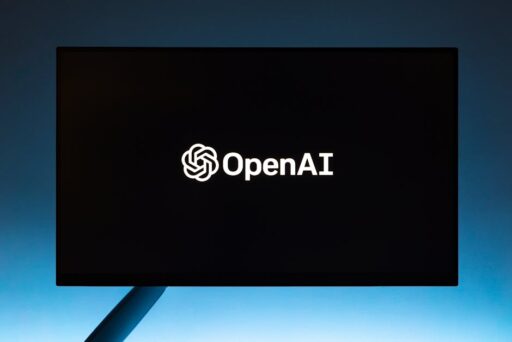How Behavioral AI Hiring and Voice Analysis Reduce Guesswork in Talent Selection
Even well-run hiring processes can feel uncertain. Resumes, cover letters and interviews surface important information, but they don’t always predict on-the-job behavior, communication style, or long-term fit. Behavioral AI hiring aims to fill that gap by using data-driven behavioral intelligence to augment human judgment—reducing bias, improving hiring outcomes, and increasing retention.
What is behavioral AI hiring and how does it work?
Behavioral AI hiring refers to systems that analyze elements of human behavior—speech, language, tone, pacing, and response patterns—to infer traits relevant to workplace performance. Rather than replacing recruiters, these systems provide structured, objective inputs that help match candidate attributes to role requirements.
One effective approach uses voice pattern analysis. Candidates respond to conversational prompts delivered by an AI agent. The platform analyzes vocal features and linguistic cues to estimate traits such as:
- Communication style (clarity, concision, adaptability)
- Empathy and interpersonal orientation
- Confidence and composure under pressure
- Task focus and problem-solving orientation
These behavioral signals are compared against role profiles and historical hiring data to produce a ranked shortlist of candidates whose traits are compatible with the position. The result is a faster, more consistent way to identify candidates likely to succeed in a specific work environment.
Why voice analysis is becoming a preferred signal
Recruiters have tried many proxies for fit—social media checks, video submissions, and cognitive tests. Voice analysis has several advantages that make it uniquely useful:
- Natural interaction: Speech is a primary human communication channel, so short conversational prompts elicit realistic behavioral responses.
- Low friction: Audio responses are easier for many candidates than polished videos or lengthy assessments.
- Signal richness: Prosodic features (tone, pitch, pauses) plus language use provide complementary signals beyond text alone.
- Scalability: Automated voice analysis scales to hundreds or thousands of candidates without increasing recruiter workload.
By combining high-quality data, careful modeling, and human-in-the-loop validation, voice-based behavioral AI can provide reliable inferences that help hiring teams prioritize candidates for interviews and offers.
How behavioral AI hiring impacts retention and equity
One leading behavioural intelligence platform reports significantly improved retention among hires sourced through voice-based assessments. While traditional annual turnover averages hover around 30% for many organizations, early data from companies using behavioral AI suggests turnover as low as 2% for hires matched by behavioral compatibility. That dramatic difference points to one key benefit of behavioral matching: better alignment between candidate tendencies and role demands.
Behavioral AI can also advance equity in hiring when implemented thoughtfully. By focusing on trait compatibility rather than pedigree or superficial signals, platforms can surface strong candidates who might otherwise be overlooked. For example, curated datasets and blind analytics have helped startups facilitate thousands of hires where a majority were women, LGBTQ+ candidates, or immigrants—groups that historically face higher friction in traditional hiring funnels.
Design principles to preserve fairness
- Use balanced, representative training data emphasizing diverse voices and backgrounds.
- Measure model performance across demographic groups and continuously mitigate disparate impact.
- Keep humans in the loop to interpret behavioral outputs and validate recommendations.
- Prioritize transparency in how behavioral traits are defined and used in matching.
What are the practical benefits for talent teams?
When talent teams adopt behavioral AI hiring thoughtfully, they typically see benefits across the recruitment lifecycle:
- Faster screening: Automated voice assessments reduce time-to-hire by surfacing candidates with the strongest behavioral fit early in the funnel.
- Improved interview quality: Recruiters enter interviews with structured insights about communication style and potential developmental opportunities.
- Better retention: Matching on behavioral compatibility helps ensure new hires thrive in the specific team culture and role.
- Broader talent pools: Objective signals enable hiring teams to prioritize traits over credentials, unlocking underrepresented talent.
How to evaluate behavioral AI vendors
Selecting a behavioral AI partner requires careful diligence. Consider these evaluation criteria:
- Data quality and curation: Does the vendor use well-labeled, diverse datasets and document their data governance practices?
- Model validation: Are predictive claims backed by evidence (retention, performance metrics) and peer-reviewed evaluations where possible?
- Bias assessment: Does the vendor publish fairness audits and provide tools to monitor disparate impacts?
- Integration options: Can the platform integrate via API with your ATS and HRIS to streamline workflows?
- Human oversight: Does the solution include guardrails so recruiters can interpret and override automated recommendations?
Case study highlights: from pilot to scale
A behavioral intelligence startup founded in 2023 focused on voice analysis has shown a rapid trajectory: seed funding, early commercial adoption, and measurable hiring outcomes. Key milestones from that journey illustrate how organizations can move from pilot projects to production deployments:
- Building specialized datasets tailored to behavioral signals rather than relying on generic voice corpora.
- Iterative model refinement informed by real hiring outcomes—tracking retention and performance of matched hires.
- Launching an API to enable partners to embed behavioral analysis beyond hiring: investment screening, educational coaching, and skills diagnostics.
- Demonstrating measurable outcomes: thousands of hires, double-digit annual recurring revenue growth, and a pronounced improvement in retention metrics.
This pathway underscores an important point: behavioral AI is most powerful when it’s grounded in high-quality, purpose-built data and when product teams prioritize real-world validation over theoretical performance.
For teams interested in the technical and data aspects that enable behavioral AI, see our deep dive on The Role of High-Quality Data in Advancing AI Models, which explains why curated datasets are a competitive advantage in behavioral systems.
What are common concerns and how to address them?
Adopting behavioral AI raises legitimate questions. Below are common concerns and practical mitigation strategies:
Privacy and consent
Ensure audio data is collected with explicit candidate consent, stored securely, and retained only as long as needed. Provide clear privacy notices that explain how behavioral inferences are generated and used in hiring decisions.
Bias and fairness
Continuously evaluate model performance across demographic slices and include human reviewers in final decisions. Use interpretable trait labels and provide candidates with the option to request human review of automated assessments.
Overreliance on automation
Behavioral AI should augment—not replace—human judgment. Recruiters should use behavioral insights to prioritize interviews and probe relevant areas, preserving qualitative assessment for cultural fit and domain expertise.
How can companies start a behavioral AI pilot?
Launching a pilot requires cross-functional alignment across talent acquisition, legal, and engineering teams. A recommended pilot checklist:
- Define success metrics (time-to-hire, retention at 6–12 months, hiring manager satisfaction).
- Select a narrow use case (e.g., customer-facing roles) and a representative candidate pool.
- Partner with a vendor that provides transparent model documentation and fairness reports.
- Set up integration with your ATS and a review loop for recruiters to validate recommendations.
- Monitor outcomes and iterate: measure who gets interviewed, hired, and retained—and adjust trait weightings accordingly.
For recruitment leaders exploring AI-driven hiring workflows more broadly, our analysis of conversational AI in recruitment provides complementary context: Revolutionizing Recruitment with AI-Powered Conversations.
Frequently asked question: Can behavioral AI replace interviews?
No. Behavioral AI is a tool to make interviews more effective and targeted. It accelerates screening and surfaces behavioral signals recruiters might otherwise miss, but live interviews remain essential to assess role-specific expertise, cultural fit, and candidate motivation.
Best practices for ethical deployment
- Maintain transparency with candidates about data use and the role of AI in decisions.
- Document and publish fairness evaluations and model limitations internally.
- Keep recruiters trained on interpreting behavioral outputs and contextualizing with work samples and references.
- Continuously audit outcomes to catch unintended consequences early.
The future: behavioral intelligence beyond hiring
Behavioral signals have applications beyond recruitment. Early adopters are exploring behavioral intelligence for:
- Investment screening and founder fit assessments
- Personalized learning pathways and skill improvement coaching
- Credit decisioning for thin-file applicants where traditional credit history is limited
As behavioral AI platforms mature into infrastructure providers, scalable APIs will let organizations embed trait-aware intelligence into workflows across HR, education, finance, and investor due diligence—always contingent on robust governance and fairness safeguards.
Conclusion: Use behavioral AI hiring to augment human judgment, not to replace it
Behavioral AI hiring—particularly voice-based analysis—offers a pragmatic way to reduce guesswork in recruitment. When grounded in high-quality data, validated against real hiring outcomes, and deployed with transparency and human oversight, these tools can improve candidate matching, reduce turnover, and expand access to underrepresented talent.
If your organization is exploring behavioral intelligence, start with a focused pilot, demand transparency from vendors, and measure outcomes against objective retention and performance metrics. This measured approach will help you harness behavioral AI hiring responsibly and effectively.
Ready to transform your hiring process?
Start a pilot to see how behavioral AI can improve candidate fit and retention. Contact our team to learn best practices, request vendor comparisons, or design a customized pilot that aligns with your hiring goals.






